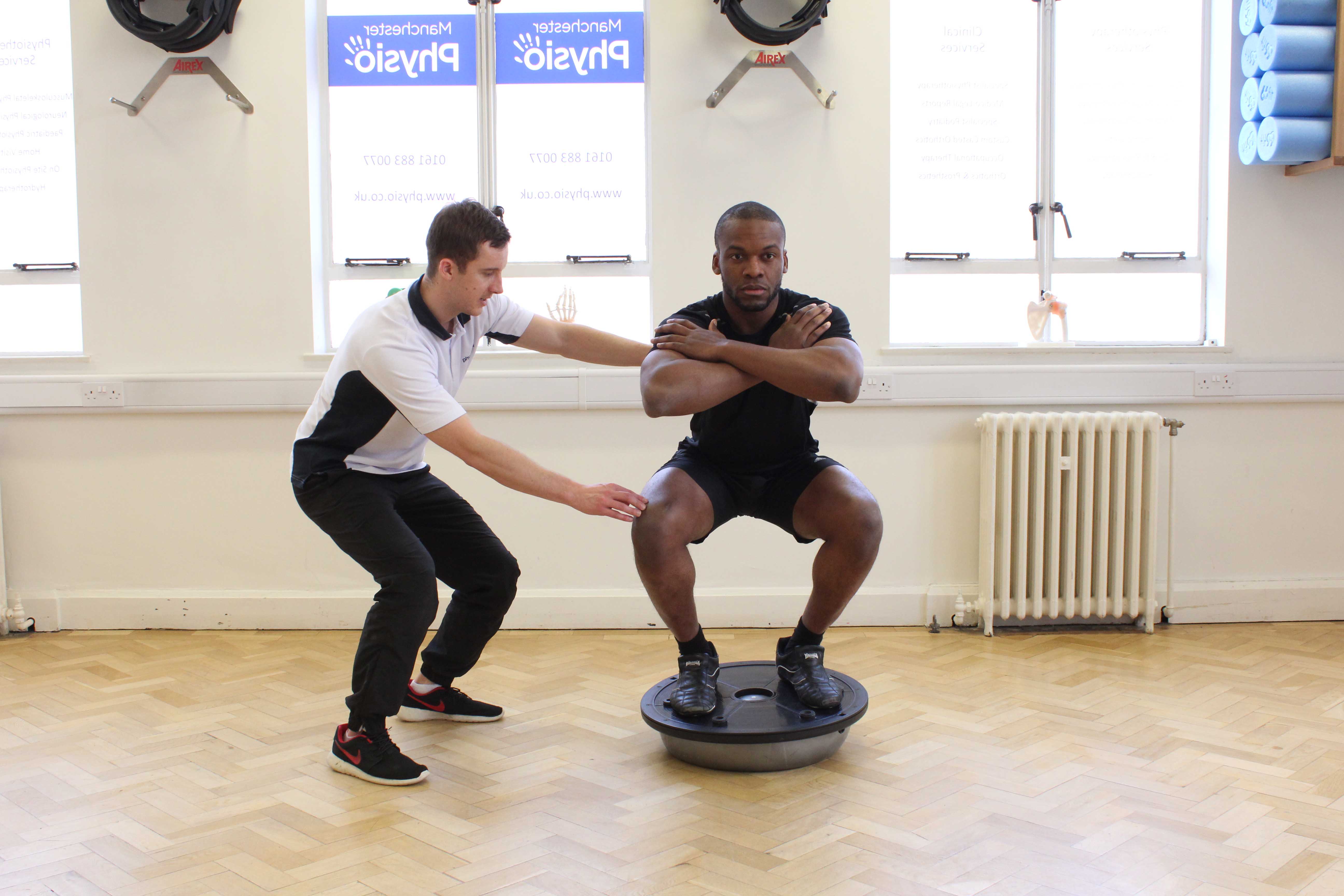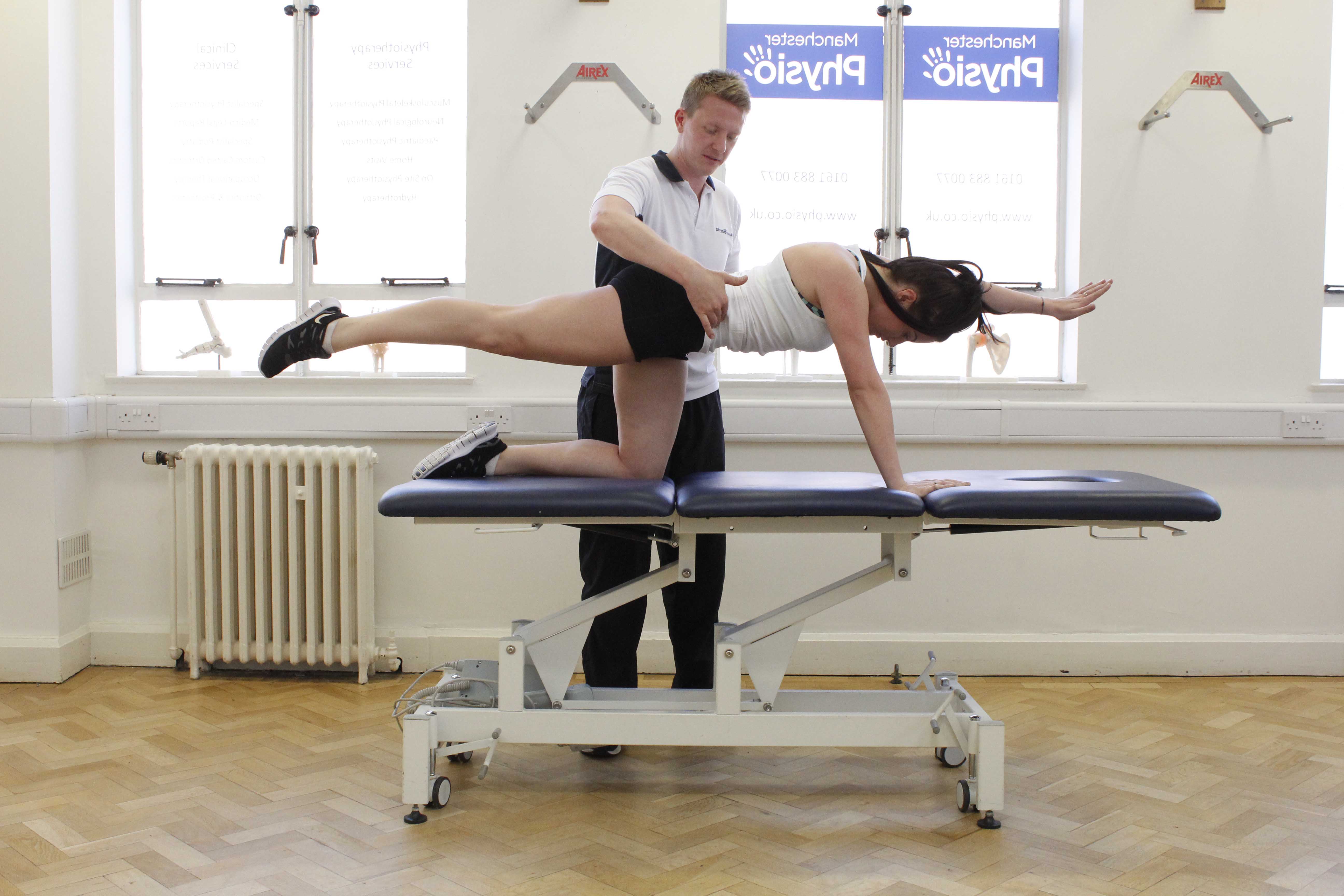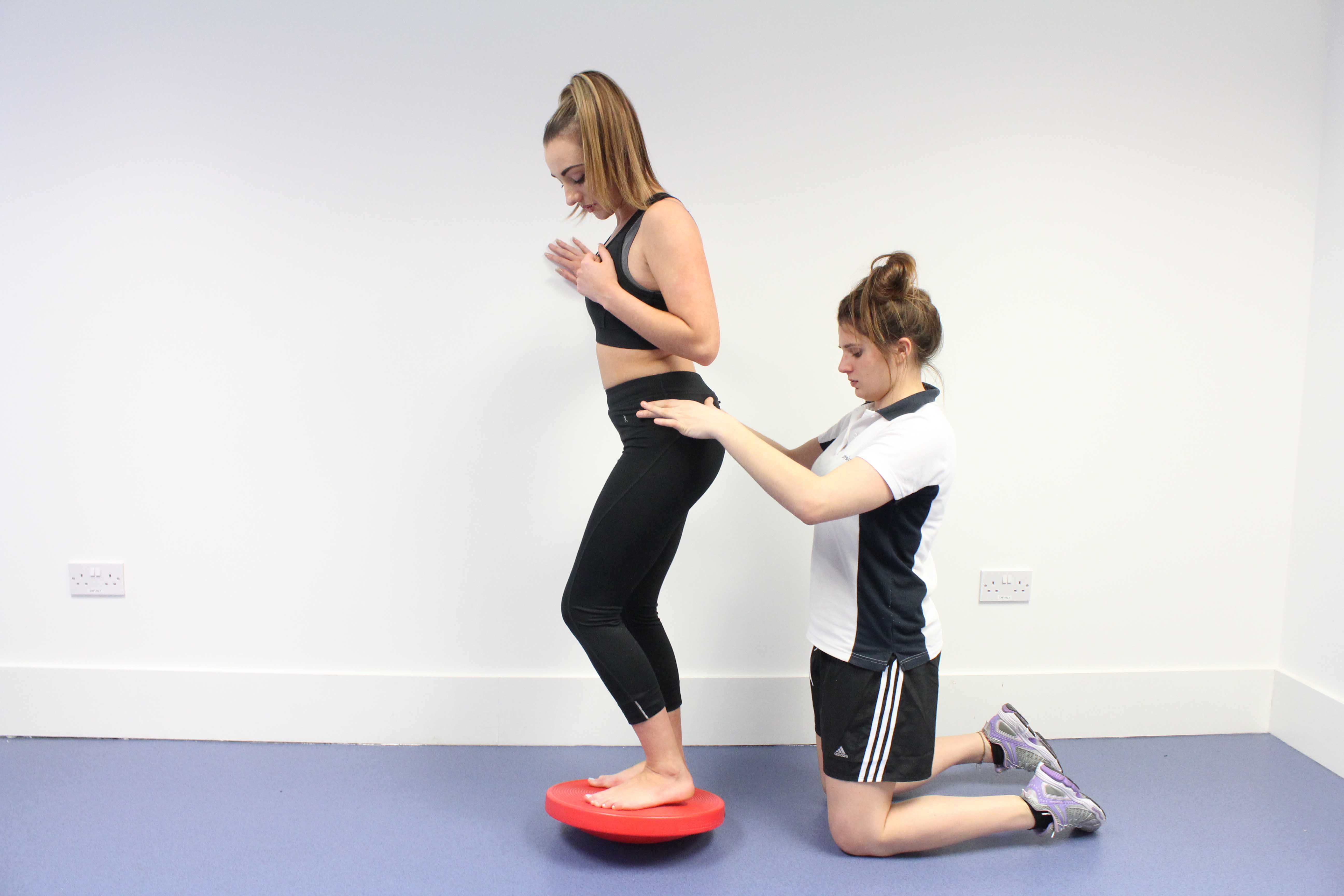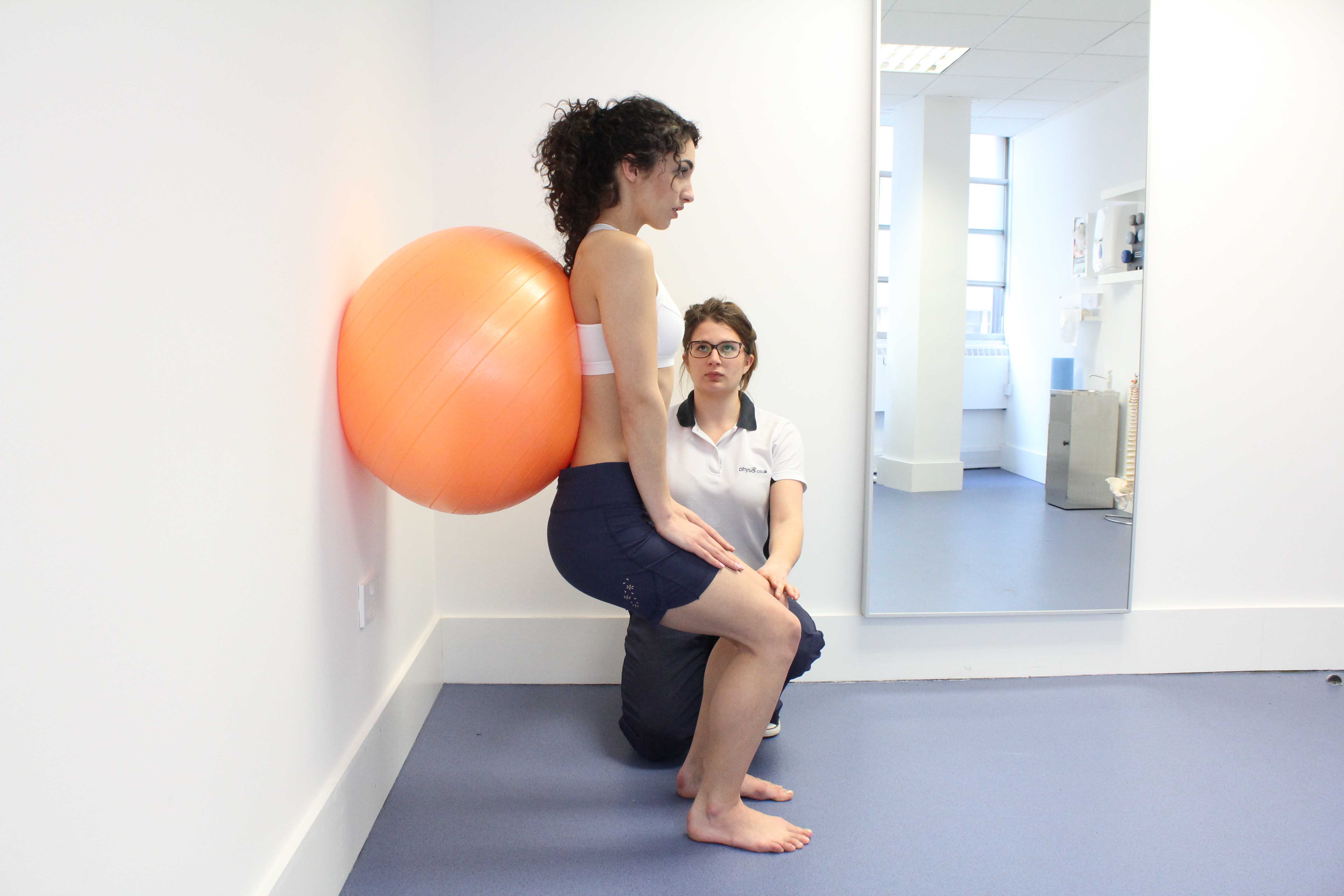Dynamic Lumbar Stabilisation is an alternative surgical procedure to Lumbar Fusion which completely restricts movement. The problem with fusion of the spine is that in the long term, extra stresses wear down spinal segments quicker.
 Above: Dynamic lower back stabilization exercises
Above: Dynamic lower back stabilization exercisesDynamic Lumbar Stabilisation Indications
Spinal surgery should only be considered if conservative treatment such as physiotherapy and lumbar injections haven’t improved symptoms. Investigations such as X-Rays and MRI scans will confirm disc degeneration.
Indications for Dynamic Lumbar Stabilisation are:
- Excessive spinal movement or disc prolapse leading to trapped nerves, causing numbness, muscle weakness and leg pain
- Spinal instability due to an acquired or congenital defect
- Worn discs causing pain
- Spinal locking or ‘giving way’
 Above: Dynamic back toning and strenghtening exercises.
Above: Dynamic back toning and strenghtening exercises.Dynamic Lumbar Stabilisation Surgical Procedure
The surgical procedure for Dynamic Lumbar Stabilisation is performed under general anaesthetic and antibiotic and involves the insertion of a movement limiting device at the affected level. One common device is called Dynesys which uses screws between affected levels connected with flexible materials such as thin cord and plastic tubes. If the disc has prolapsed, a discectomy (disc removal) may also be required during surgery.
 Above: Dynamic balances exercises for the lower back
Above: Dynamic balances exercises for the lower backThe Benefits Post-Surgery
The benefits of Dynamic Lumbar Stabilisation include:
- Great reduction of symptoms as a result of nerve impingement such as leg pain, weakness, numbness and pins and needles
- Control of excessive spinal movement
- Improved spinal alignment
- Better function and quality of life
Physiotherapy Rehabilitation Post-Surgery
Following Dynamic Lumbar Stabilisation, you are encouraged to mobilised 24 hours post-surgery if you are feeling well. Physiotherapy may follow a specific protocol which varies depending on the surgeon. Rehabilitation will be achieved by using various techniques, individualised for your age, ability and goals, starting off gently and progressing with improvements.
 Above: Lower back mobilisation exercises to improve stability
Above: Lower back mobilisation exercises to improve stabilityPhysiotherapy for post-surgery rehabilitation includes:
- Exercise Programme
Your physiotherapist will give you an individual exercise programme to improve muscle strength, reduce tightness and increase your core stability. - Postural and Lifestyle Advice
You will be given advice regarding correct posture and functional movement techniques to integrate into your daily life. - Hydrotherapy
Hydrotherapy is a great way to relax muscles, reduce/manage pain and perform exercises in the buoyancy of the warm water. - Joint Mobilisation
Your physiotherapist will mobilise or manipulate spinal joints by performing gentle ranges of movement to reduce stiffness and muscle spasm.
For physiotherapy following Dynamic Lumbar Stabilisation surgery e-mail office@manchesterphysio.co.uk or call 0330 088 7800.

 0330 088 7800
0330 088 7800


































